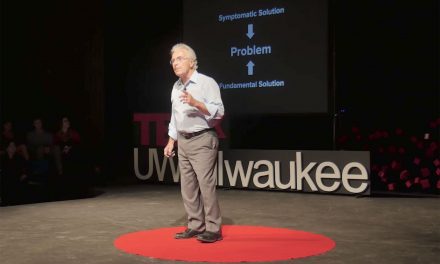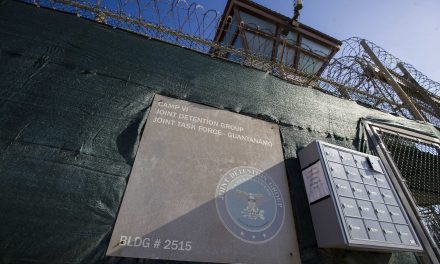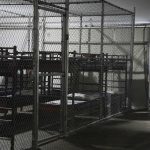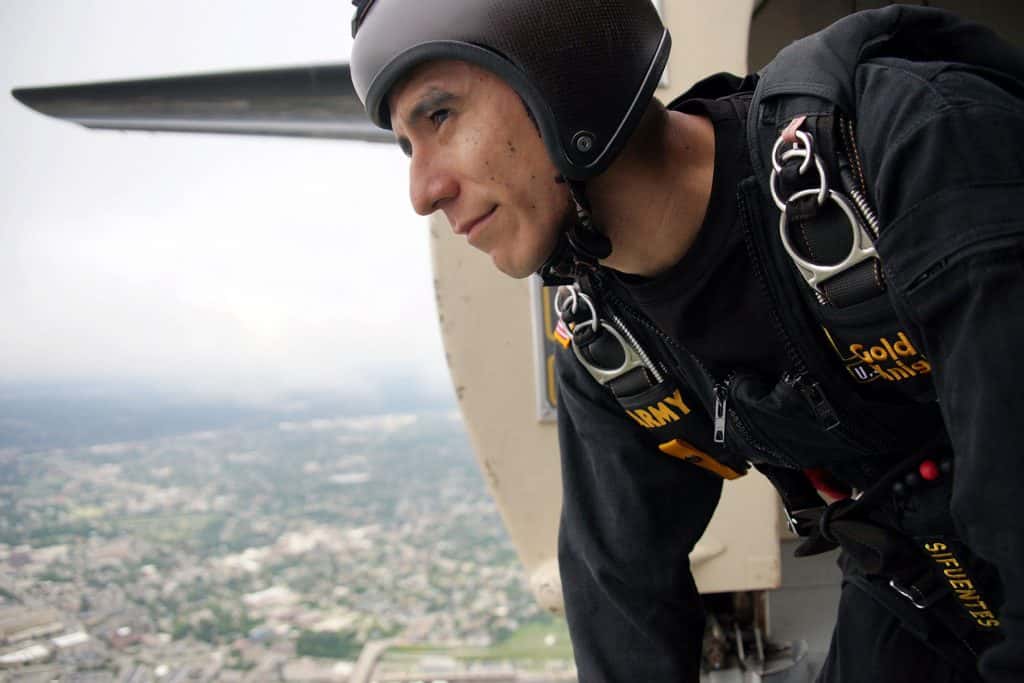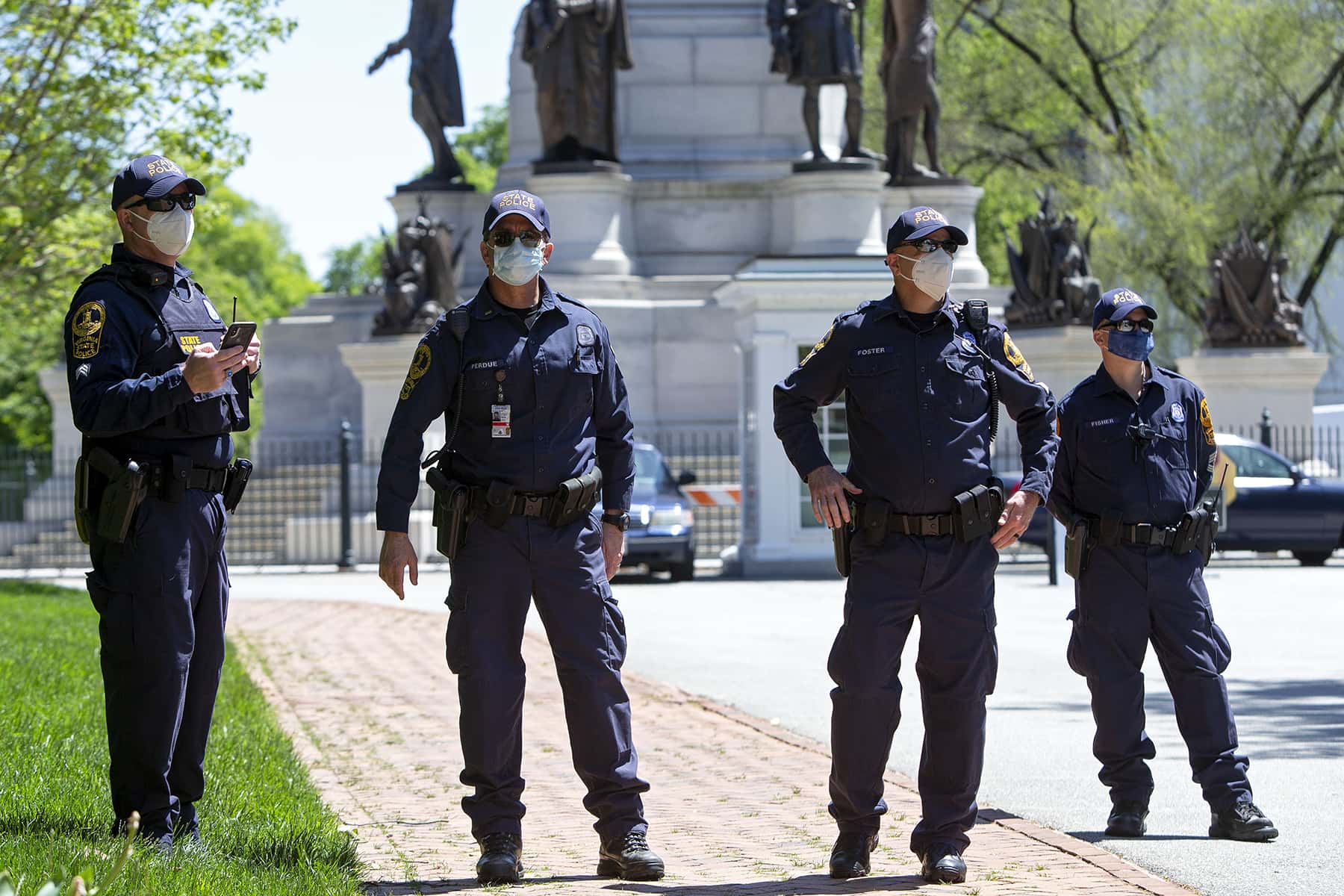
By Shauna Shames, Associate Professor, Rutgers University; and Amy Atchison, Associate Professor of Political Science & International Relations, Valparaiso University
Dystopian fiction is hot. Sales of George Orwell’s “1984” and Margaret Atwood’s “The Handmaid’s Tale” have skyrocketed since 2016. Young adult dystopias – for example, Suzanne Collins’ “The Hunger Games,” Veronica Roth’s “Divergent,” Lois Lowry’s classic, “The Giver,” were best-sellers even before. And with COVID-19, dystopias featuring diseases have taken on new life. Netflix reported a spike in popularity for “Outbreak,” “12 Monkeys,” and others.
Does this popularity signal that people think they live in a dystopia now? Haunting images of empty city squares, wild animals roaming streets and miles-long food pantry lines certainly suggest this. We want to offer another view. “Dystopia” is a powerful but overused term. It is not a synonym for a terrible time.
The question for us as political scientists is not whether things are bad – they are, but how governments act. A government’s poor handling of a crisis, while maddening and sometimes disastrous, does not constitute dystopia.
Legitimate coercion
As we argue in our book, Survive and Resist: the Definitive Guide to Dystopian Politics, the definition of dystopia is political. Dystopia is not a real place; it is a warning, usually about something bad the government is doing or something good it is failing to do. Actual dystopias are fictional, but real-life governments can be “dystopian” – as in, looking a lot like the fiction.
Defining a dystopia starts with establishing the characteristics of good governance. A good government protects its citizens in a non-coercive way. It is the body best positioned to prepare for and guard against natural and human-made horrors. Good governments use what’s called “legitimate coercion,” legal force to which citizens agree to keep order and provide services like roads, schools and national security. Think of legitimate coercion as your willingness to stop at a red light, knowing it’s better for you and others in the long run.
No government is perfect, but there are ways of judging the imperfection. Good governments – those least imperfect – include a strong core of democratic elements to check the powerful and create accountability. They also include constitutional and judicial measures to check the power of the majority. This setup acknowledges the need for government but evidences healthy skepticism of giving too much power to any one person or body.
Federalism, the division of power between national and subnational governments, is a further check. It has proved useful lately, with state governors and mayors emerging as strong political players during COVID-19.
Three kinds of dystopias
Bad governments lack checks and balances, and rule in the interest of the rulers rather than the people. Citizens cannot participate in their own governance. But dystopian governments are a special kind of bad; they use illegitimate coercion like force, threats and the “disappearing” of dissidents to stay in power.
Our book catalogs three major dystopia types, based on the presence – or absence – of a functioning state and how much power it has. There are, as in Orwell’s “1984,” overly powerful governments that infringe on individual lives and liberties. These are authoritarian states, run by dictators or powerful groups, like a single party or corporate-governance entity. Examples of these governments abound, including Assad’s murderously repressive regime in Syria and the silencing of dissent and journalism in Russia.
The great danger of these is, as our country’s Founding Fathers knew quite well, too much power on the part of any one person or group limits the options and autonomy of the masses.
Then there are dystopic states that seem non-authoritarian but still take away basic human rights through market forces; we call these “capitocracies.” Individual workers and consumers are often exploited by the political-industrial complex, and the environment and other public goods suffer. A great fictional example is Wall-E by Pixar (2008), in which the U.S. president is also CEO of “Buy ‘N Large,” a multinational corporation controlling the economy.
There are not perfect real-life examples of this, but elements are visible in the chaebol – family business – power in South Korea, and in various manifestations of corporate political power in the U.S, including deregulation, corporate personhood status and big-company bailouts.
Lastly there are state-of-nature dystopias, usually resulting from the collapse of a failed government. The resulting territory reverts to a primitive feudalism, ungoverned except for small tribal-held fiefdoms where individual dictators rule with impunity. The Citadel versus Gastown in the stunning 2015 movie “Mad Max: Fury Road” is a good fictional depiction. A real-life example was seen in the once barely governed Somalia, where, for almost 20 years until 2012, as a U.N. official described it, “armed warlords (were) fighting each other on a clan basis.”
Fiction and real life
Indeed, political dystopia is often easier to see using the lens of fiction, which exaggerates behaviors, trends and patterns to make them more visible. But behind the fiction there is always a real-world correlate. Orwell had Stalin, Franco and Hitler very much in mind when writing “1984.”
Atwood, whom literary critics call the “prophet of dystopia,” recently defined dystopia as when “[W]arlords and demagogues take over, some people forget that all people are people, enemies are created, vilified and dehumanized, minorities are persecuted, and human rights as such are shoved to the wall.” Some of this may be, as Atwood added, the “cusp of where we are living now.”
But the U.S. is not a dystopia. It still has functioning democratic institutions. Many in America fight against dehumanization and persecution of minorities. Courts are adjudicating cases. Legislatures are passing bills. Congress has not adjourned, nor has the fundamental right of habeas corpus – the protection against illegal detention by the state – (yet) been suspended.
Crisis as opportunity
And still. One frequent warning is that a major crisis can cover for the rolling back of democracy and curtailing of freedoms. In Atwood’s “The Handmaid’s Tale,” a medical crisis is the pretext for suspending the Constitution. In real life, too, crises facilitate authoritarian backsliding. In Hungary the pandemic has sped democracy’s unraveling. The legislature gave strongman Prime Minister Viktor Orban the power to rule by sole decree indefinitely, the lower courts are suspended and free speech is restricted.
Similar dangers exist in any number of countries where democratic institutions are frayed or fragile; leaders with authoritarian tendencies may be tempted to leverage the crisis to consolidate power.
But there are also positive signs for democracy. People are coming together in ways that did not seem possible just a few months ago. This social capital is an important element in a democracy. Ordinary people are performing incredible acts of kindness and generosity – from shopping for neighbors to serenading residents at a nursing home to a mass movement to sew facemasks.
In politics, Wisconsin primary voters risked their lives to exercise their right to vote during the height of the pandemic. Citizens and civil society are pushing federal and state governments to ensure election safety and integrity in the remaining primaries and the November election.
Despite the eerie silence in public spaces, despite the preventable deaths that should weigh heavily on the consciences of public officials, even despite the authoritarian tendencies of too many leaders, the U.S. is not a dystopia – yet. Overuse clouds the word’s meaning. Fictional dystopias warn of preventable futures; those warnings can help avert the actual demise of democracy.
Ryan M. Kelly
Originally published on The Conversation as Are we living in a dystopia?
Support evidence-based journalism with a tax-deductible donation today, make a contribution to The Conversation.

